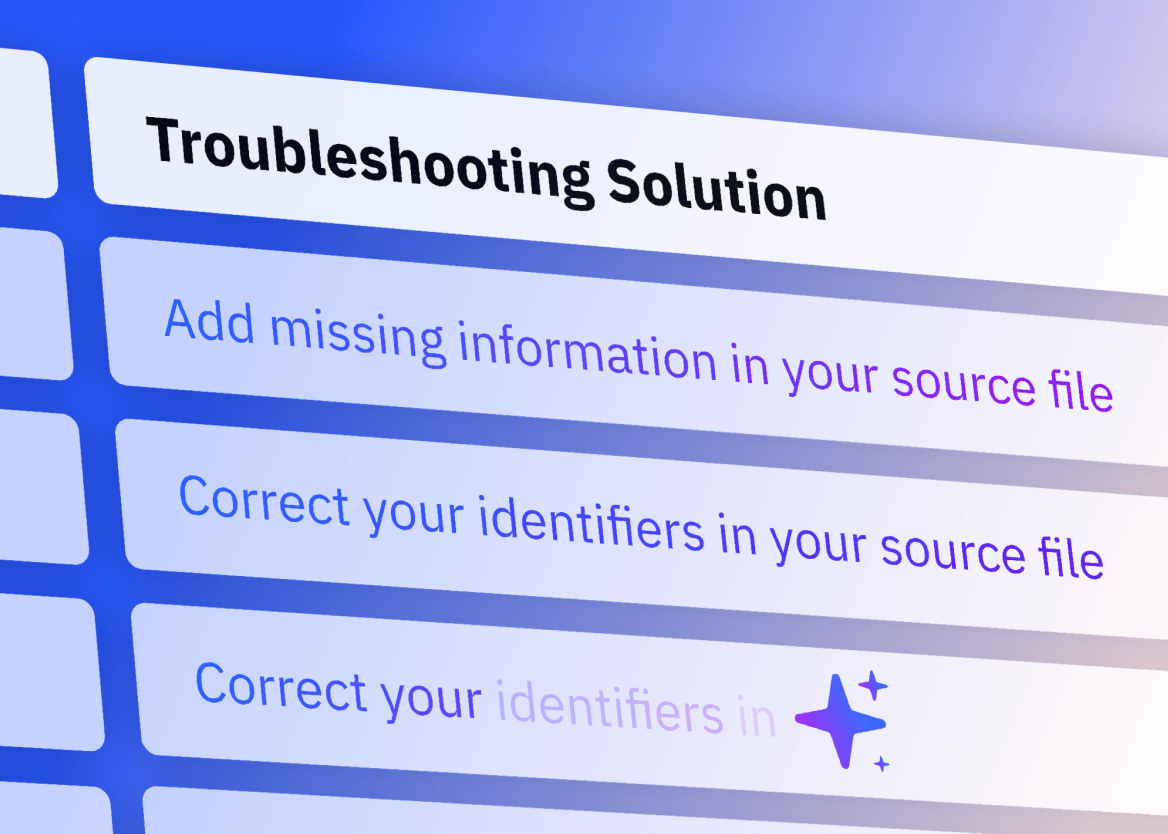More than APIs: The data discipline needed to win in agentic commerce

Few things in retail have made waves like the recent announcement of ChatGPT’s shopping API, that allows OpenAI’s popular chatbot to connect to platforms like Shopify and Salesforce.
This is no doubt exciting news for retailers on those platforms — and really anyone excited about the next evolution of online buying — but it’s far from the end game.
In fact, it’s vitally important that those with connections to ChatGPT via these platforms understand the reality of the moment: connectivity alone does not guarantee discoverability.
The false promise of point-to-point integration
Agentic commerce is a great example of a rocket being built mid flight. Many know what they hope the end point will be, but the vision is yet to be realized.
This means it’s easy for the reality of ChatGPT’s API to get caught up in the internet hype cycle.
While it’s true that this connection allows Salesforce and Shopify customers to access their CRM data and commerce capabilities through the ChatGPT interface, the connection alone does not guarantee customers will be able to find your brands and products through this interface.
The uncomfortable truth remains: Even if you're on Shopify or Salesforce with these new ChatGPT connections, you're still more likely than not to be undiscoverable at worst, or, at best, to appear behind digital natives who have already optimized their product data for LLM consumption.
Consider, for example, a recent internal analysis of a major U.S. retailer and their visibility on ChatGPT-5. Our team tested nearly 1,500 product keywords with the prompt “list retailers that sell [keyword]” and the results were staggering.
While Amazon and Walmart appeared in more than 90% of prompt responses, this major retailer — operating 450 stores throughout the U.S. and with roots dating back to the 1800s — only showed up in less than 5% of total responses. They were never the first retailer recommended in any of the nearly 1,500 prompt responses.
Are you willing to bet 20% of future revenue on poor product data?
Gartner research predicts that AI agents will drive 20% of eCommerce traffic by 2028.
This presents a significant opportunity: retailers who optimize their product data and agentic commerce strategy could achieve comparable growth in that timeframe.
Conversely, those who fail to adapt risk missing out on this growth or even experiencing declines.
To capitalize on this, retailers must approach their product pages with a dual focus: generative engine optimization (GEO) for AI agents and the traditional SEO valued by human consumers.
Many retail leaders haven't fully grasped that every product detail page now acts as an AI-powered digital salesperson, capable of either enhancing or harming their brand.
These sophisticated AI shopping assistants will not only prefer rich, detailed product content but will actively filter out products with insufficient data.
What do AI agents want from retailers’ product pages?
Winning in agentic commerce isn't just about being connected to the right chatbot — it's about having LLM-optimized product data.
Here are the critical data layers that separate winners from losers in agentic commerce:
1. Structured data (JSON-LD) — The foundational layer
JSON-LD provides the language that lets AI agents extract product details like prices, availability, specifications and reviews, without parsing complex HTML. Products with sparse structured data become invisible to AI systems that prioritize easily parseable, verified information.
2. Product specifications — The decision engine
Product specifications provide the detailed technical attributes that AI agents need to precisely match products against user requirements and make automated compatibility checks. Without comprehensive specs, your products can't compete in the nuanced decision-making processes that AI agents facilitate for consumers.
3. Visual content and alt text — The verification layer
Product images and descriptive alt text enable AI agents to perform visual similarity searches, verify product authenticity and match user preferences based on aesthetic attributes that text alone cannot capture. Generic or missing alt text renders your visual content useless to AI systems.
4. Product identity fields — The cross-platform bridge
Product identity fields (GTIN, MPN, EAN) enable AI agents to accurately match and compare identical products across multiple retailers, ensuring price comparisons are performed on the exact same item rather than similar alternatives. Without standardized identifiers, AI agents cannot confidently recommend your products.
5. Meta tags and site architecture — The discovery highway
Meta HTML tags like canonical URLs and category breadcrumbs help AI agents efficiently navigate site architecture and discover relevant product pages. Poor site architecture and missing meta tags create friction that causes AI agents to bypass your catalog entirely.
Amazon's head start sets the benchmark for competition
Amazon's rigorous approach to data quality isn't just about maintaining clean databases; it's about building an AI-ready foundation that drives market dominance.
Yet, surprisingly, many retailers continue to treat incomplete specifications, low-quality images and imprecise descriptions as minor operational hiccups rather than what they truly are: strategic vulnerabilities that directly impact revenue.
The majority of retailers lag behind Amazon even though they have more specialized assortments — home, sporting goods, fashion, etc. The difference isn't inventory; it's infrastructure optimized for autonomous agents.
The solution: Purpose-built infrastructure for agentic commerce
The answer isn't more workarounds or browser-based scraping solutions. Agentic commerce needs a platform, not a patchwork. What's required is purpose-built infrastructure that transforms raw product data into agent-ready listings with:
AI-powered content optimization that automatically fills attributes from text and images.
Standardized product identity fields (GTIN, MPN, EAN) enabling cross-platform matching.
Enhanced visual content with descriptive alt text for computer vision analysis.
Structured data standardization using schema.org vocabularies.
Comprehensive specification databases that enable parametric searches and compatibility checks.
Learn more on winning in agentic commerce with BCG
The retailers who recognize this shift early and invest in proper product data infrastructure will capture the first massive wave of agentic revenues. Those who don't will watch from the sidelines as digital natives and proactive competitors win the new buy box.
Join us for an exclusive BCG webinar this December where we'll dive deeper into the specific strategies and technologies needed to optimize your product catalog for the agentic commerce revolution.
In the age of AI agents, being connected isn't enough — you need discoverability.
Learn how Mirakl's MCM Advanced can help you optimize your product data for AI discoverability and conversion by signing up for the webinar here.



